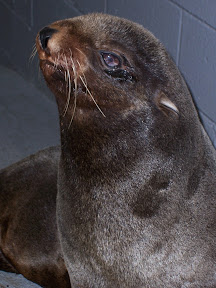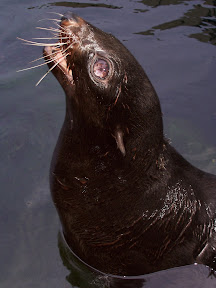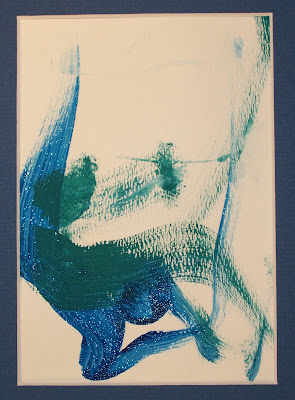Seals aren't the only animals found in our Harbor Seal Exhibit. My name is Erin, a marine mammal trainer here at the NEAq. Last December, after doing a routine cleaning dive in the front exhibit, I helped introduce "Chewie" (short for Chewbacca), a 17-pound American lobster into his new home. Harbor seals and lobsters are naturally found in the same waters, so it was no stretch to believe that they would be able to live together here at the NEAq. The 7 Harbor seals at the NEAq have shared space with a number of lobsters over the years (including Luke and Leia), but none as big as Chewie, and while his size may be intimidating to us, everyone is getting along great in the exhibit. You will likely find him on the left side of the exhibit, so be sure to stop and take a look the next time you come by.
 subscribe
subscribe











